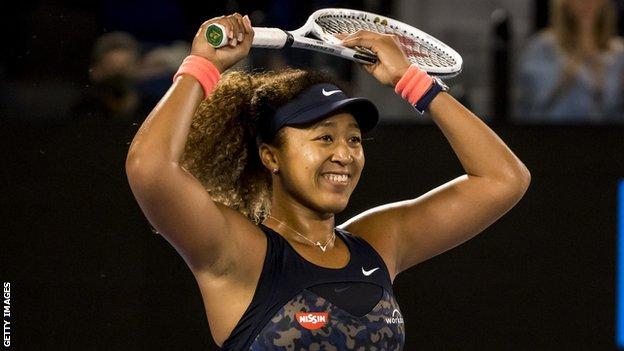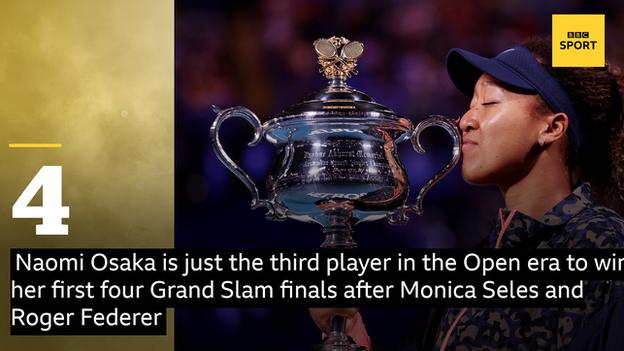

Barely 12 months ago, when asked to explain an error-strewn defeat by a 15- year-old Coco Gauff at the Australian Open, Naomi Osaka said she was yet to develop a champion’s mentality.
It has not taken long to acquire.
The 23-year-old’s victory over Jennifer Brady in this year’s final in Melbourne was a second consecutive Grand Slam title, and a 21st match win in a row.
Serena Williams still makes a very persuasive case, but for me Osaka has become the player the rest of the tour now measure themselves against.
Osaka says she still finds it intimidating to spy Williams on the other side of the net – but that equally is a sensation the Japanese now evokes in others.
In the past year, Osaka has resoundingly found her voice.
The player who told her coaching team everything was fine – when it clearly was not – before last year’s third round-defeat by Gauff, is now able to share with them her anxieties and fears.
That process was no doubt accelerated during a six-week training block last summer, when Osaka invited coach Wim Fissette and the rest of the team to stay at her house in Los Angeles.

Osaka has also lent her voice to the Black Lives Matter movement. She visited George Floyd’s memorial in Minneapolis, and chose to withdraw from a semi-final at the pre-US Open tournament in New York in protest at the police shooting of Jacob Blake.
Both the WTA Tour and the ATP Tour followed her lead, suspending play for 24 hours.
She also chose to honour black lives lost through each of the seven masks she wore onto court in her successful pursuit of the US Open title in September.
The subsequent media questioning was not something Osaka found easy, but the events of 2020 have helped her gain perspective. Her existence, she says, is no longer legitimised by winning a tennis match.
Osaka does not now see expectations as a burden – in the way she did when losing her title to Gauff in Melbourne, or when falling to Yulia Putintseva as a recent world number one in the first round of Wimbledon 2019.
“I feel like I’m at the point now where it’s something that I’ve worked for,” she said after winning for a second time in Melbourne.
“People wouldn’t expect things from me if I hadn’t done things prior, if that makes sense.”
Osaka schedules carefully. She will not play again for a month, until the Miami Open begins in late March.
And after that it will be time to see whether she can turn herself into a multiple multi-surface Grand Slam champion.
Her four titles thus far have come on the hard courts of Melbourne and New York. On the clay of Roland Garros, and the grass of Wimbledon, Osaka is yet to go beyond the third round.

The new world number two hopes to be able to prove herself on the clay before the grass – but that is only because Roland Garros starts five weeks before Wimbledon.
Osaka did reach a semi-final and two other quarter-finals in the build-up to the French Open of 2019. Some of her training was on clay during last year’s suspension of the tours, and coach Fissette considers it just a matter of time.
“For me, she’s kind of a natural mover on the court,” he said earlier this week in Melbourne.
“I think when you don’t have a lot of experience of success on those surfaces, that’s easy to start doubting. If Naomi plays on hard court and she goes for the forehand winner and she misses, she will say, ‘OK, next time I will make it.’
“So we have to use opportunities to play a lot of matches, and then I’m sure she will be successful on both surfaces. Maybe this year, but if not this year, probably next year.
“On grass, on the other hand, she has expressed already she’s a bit afraid of falling or slipping on the court. She never played juniors. So from all, let’s say all the top 20 players out there, I don’t think anyone has spent less time on grass than Naomi has so far.
“She’s a very quick learner. She’s a smart girl. I’m sure she’s gonna be fine.”
So there is plenty to challenge Osaka before the next hard court Grand Slam begins in New York at the end of August. Including, hopefully, a home Olympic Games – which will be another test of trying to live up to enormous expectations. – bbc.com